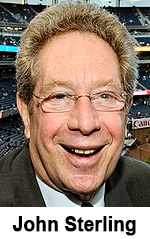Sabo Sez: Make it Bigger
By Walter Sabo
CEO Sabo Media Action Partners
A.K.A. Walter Sterling
Host, WPHT, Philadelphia
Host, Talk Media Network
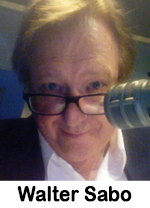 When a new restaurant opens, smart owners put the phone on busy so would-be diners believe the joint is hot, packed and hard to get in to. At street fairs we are drawn to merchant booths with long lines. Crowds give us confidence.
When a new restaurant opens, smart owners put the phone on busy so would-be diners believe the joint is hot, packed and hard to get in to. At street fairs we are drawn to merchant booths with long lines. Crowds give us confidence.
My mentor, Ed McLaughlin, as president of the ABC Radio Networks had one dictate when presented with a new idea: Make it bigger.
Last week radio hosted a major event. An event so big that it was covered by all media, except… except… radio and most radio trades. After turning down the Washington Post and The New York Times, the President of the United States gave the longest interview of his tenure to a radio star, Howard Stern. A commercial radio interview. Not NPR. Not MSNBC, not The View. Radio. The president, like hundreds of other leaders and businesses believes radio is the best medium to sell his message.
The president’s choice of medium should now be the first slide on every sales deck of every radio pitch. Today!
The damage of small. Many people in our business sell small and it hurts the industry. It’s easy to be dismissive of the Stern interview of Biden… instead, why not own it? Make it your interview because you share the same playing field.
Smart media executives do everything they can to make their stage seem to earn the largest possible audience. Cable, for example sells “homes passed.” Really. Cable sells the number of homes that can receive the advertiser’s message because those homes have cable. Using cable’s selling logic, radio could win every buyer’s analysis by selling “radios installed.”
About 20 years ago radio sellers started showing their station’s “time spent listening” (TSL) data to media buyers. That is the lowest number. While local TV stations sell their “designated market area” (DMA), radio mines the very tiniest delivery number: TSL
Your website’s first name is WORLD WIDE. Shockingly many radio companies strive to make their website “more local.” Stations have federal licenses dictating that their signal is specifically LOCAL. Your website could turn your station into a world-wide business with pristine world-wide delivery. Rather than grow, many broadcasters fought to have permission to geo-fence their signal, they fought to get smaller.
A major ratings week’s results for FOX News or CNN would get the program director of WLTW, KOST, Z100 or WINS fired. CNN had an average of 601,000 viewers in March. What’s your station’s cume? CNN grossed $1.1 BILLION dollars. They aren’t selling numbers. They are selling their brand: CNN or FOX or MSNBC. Cable networks, all with tiny viewership compared with WCBS-AM, WBZ-AM, or KFI’s cume, deliver ancient demos yet they are grossing a billion bucks by selling their brand and their environment. They sell shows. A show is as big as the seller and buyer can imagine. Imagine bigger.
Put simply: 1010 WINS has more listeners in New York City than the “Tonight Show” has viewers in New York City. There’s your second slide.
Media buyers want a deal. They want radio to bring in the buy. But the CEO of the brand wants an environment for their message that moves product. Your hosts can move product. Your listener can name your hosts, which instills trust and listeners can recall copy points from hosts’ live reads. To an investor, the relationship between your listener and your host is defined as goodwill. Goodwill adds considerable value to your station. Selling the dynamic of listener engagement will justify much higher rates than TSL.
Walter Sabo has been a C Suite action partner for companies such as SiriusXM, Hearst, Press Broadcasting, Gannett, RKO General and many other leading media outlets. His company HITVIEWS, in 2007, was the first to identify and monetize video influencers. HITVIEWS clients included Pepsi, FOX TV, Timberland, Microsoft, and CBS Television. He can be reached at sabowalter@gmail.com. His nightly show “Walter Sterling at Night” is debuting next week on WPHT, Philadelphia. His syndicated show, “Sterling On Sunday,” from Talk Media Network, airs 10:00 pm-1:00 am ET, now in its 10th year of success.



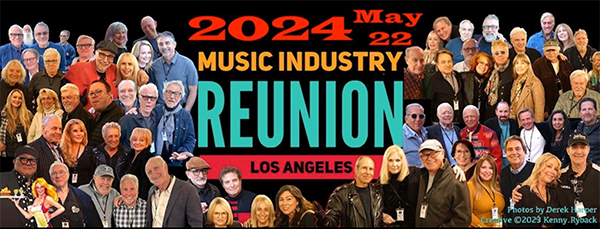
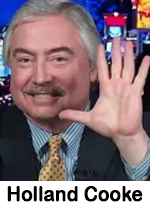 Ratings – and advertisers’ results – reward what listeners remember, what sticks-out, not clichés that blend-in. So, avoid blah-blah-blah such as…
Ratings – and advertisers’ results – reward what listeners remember, what sticks-out, not clichés that blend-in. So, avoid blah-blah-blah such as…
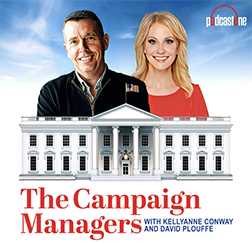 Conway and David Flouffe.” PodcastOne says that the weekly podcast – to debut on May 22 – will “go beyond the headlines and bylines driving the heated 2024 presidential race to offer expert opinions and perspectives in the most pivotal presidential campaign in American democratic history.” PodcastOne president and co-founder Kit Gray says, “Kellyanne and David are icons in the political landscape. Their intelligent delivery of data and facts, their dynamic presentation of opinions and strategy and their wealth of knowledge on what it takes to become the next President of the United States is a privilege and a thrill to listen to, and we at PodcastOne are excited to be able to bring this podcast to the public.”
Conway and David Flouffe.” PodcastOne says that the weekly podcast – to debut on May 22 – will “go beyond the headlines and bylines driving the heated 2024 presidential race to offer expert opinions and perspectives in the most pivotal presidential campaign in American democratic history.” PodcastOne president and co-founder Kit Gray says, “Kellyanne and David are icons in the political landscape. Their intelligent delivery of data and facts, their dynamic presentation of opinions and strategy and their wealth of knowledge on what it takes to become the next President of the United States is a privilege and a thrill to listen to, and we at PodcastOne are excited to be able to bring this podcast to the public.” and podcasts are all a part of what we do, so show us what you’ve got. The successful candidate will be responsible for all aspects of programming including scheduling content, coaching on-air staff, station and AM/FM cluster strategy, development of on-air/online promotions and generating associated revenue, oversight and content creation for digital extensions (including streams, websites and podcasts), and have a strong customer service approach towards listeners, staff, & sales. Additionally, the candidate will act as the program director for Legendary News Radio KKOB and KNML The Sports Animal.
and podcasts are all a part of what we do, so show us what you’ve got. The successful candidate will be responsible for all aspects of programming including scheduling content, coaching on-air staff, station and AM/FM cluster strategy, development of on-air/online promotions and generating associated revenue, oversight and content creation for digital extensions (including streams, websites and podcasts), and have a strong customer service approach towards listeners, staff, & sales. Additionally, the candidate will act as the program director for Legendary News Radio KKOB and KNML The Sports Animal. 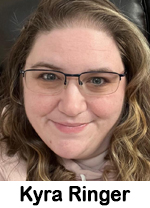 the chief engineer for Cumulus Media in Fort Walton Beach and Pensacola, Florida. Beasley says Ringer will be responsible for transmitter and studio maintenance, troubleshooting and repairs of the market’s RF systems, maintaining and utilizing Wheatstone and WheatNet for audio routing and broadcasting, and other related duties. Ringer comments, “Having been raised in studios and transmitter sites, I feel that broadcast engineering is in my DNA. My father has been a broadcast engineer for more than 40 years and has taught me most of what I know. I credit him with instilling an unwavering work ethic in me as I watched him work tirelessly through my childhood years. I have been working in radio for more than 25 years and love every aspect of what I do.”
the chief engineer for Cumulus Media in Fort Walton Beach and Pensacola, Florida. Beasley says Ringer will be responsible for transmitter and studio maintenance, troubleshooting and repairs of the market’s RF systems, maintaining and utilizing Wheatstone and WheatNet for audio routing and broadcasting, and other related duties. Ringer comments, “Having been raised in studios and transmitter sites, I feel that broadcast engineering is in my DNA. My father has been a broadcast engineer for more than 40 years and has taught me most of what I know. I credit him with instilling an unwavering work ethic in me as I watched him work tirelessly through my childhood years. I have been working in radio for more than 25 years and love every aspect of what I do.”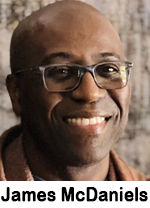 client, Yamanair Creative. James McDaniels moves up from his role as producer to production manager for the Yamanair Commercial Production Team. He will be responsible for assigning, producing, and coordinating spots for clients. Kyle
client, Yamanair Creative. James McDaniels moves up from his role as producer to production manager for the Yamanair Commercial Production Team. He will be responsible for assigning, producing, and coordinating spots for clients. Kyle 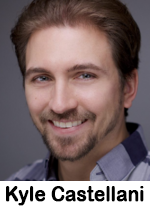 Castellani is promoted from writer to head writer for the Yamanair Commercial Production Team. In his new role, Castellani will oversee copywriting and project management for the team. East Coast director of commercial production MJ Bloch says, “We are thrilled to have Kyle Castellani as Lead Writer. His creativity is unmatched, and we’re excited to see what the future brings. James McDaniels has been an amazing producer and voiceover artist for many decades. We are so delighted to have him on the Benztown team in this role. His talent and dedication to his craft are top notch.”
Castellani is promoted from writer to head writer for the Yamanair Commercial Production Team. In his new role, Castellani will oversee copywriting and project management for the team. East Coast director of commercial production MJ Bloch says, “We are thrilled to have Kyle Castellani as Lead Writer. His creativity is unmatched, and we’re excited to see what the future brings. James McDaniels has been an amazing producer and voiceover artist for many decades. We are so delighted to have him on the Benztown team in this role. His talent and dedication to his craft are top notch.”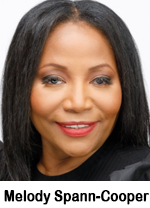 National Association of Broadcasters. She said, “AM Radio is important to communities across the country not only because it is a cultural, news and sports oasis that educates the public, but also because it is a resilient lifeline during public safety emergencies. To put it as simply as I can, the foremost reason that Congress should care about AM radio is that it is a lifesaver. No other communications medium has the reach or resiliency of AM radio. A single station can be heard as far as 700 miles away. The signal cuts through buildings and mountains. In remote areas where no cell signal or FM station can be found, AM
National Association of Broadcasters. She said, “AM Radio is important to communities across the country not only because it is a cultural, news and sports oasis that educates the public, but also because it is a resilient lifeline during public safety emergencies. To put it as simply as I can, the foremost reason that Congress should care about AM radio is that it is a lifesaver. No other communications medium has the reach or resiliency of AM radio. A single station can be heard as far as 700 miles away. The signal cuts through buildings and mountains. In remote areas where no cell signal or FM station can be found, AM 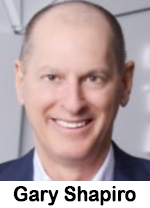 is there. When the power goes out, radio stations can still be found on battery or crank radios, or in your car.” She argued that cell phone notifications alone in emergency situations are unreliable as power outages can affect cell service.
is there. When the power goes out, radio stations can still be found on battery or crank radios, or in your car.” She argued that cell phone notifications alone in emergency situations are unreliable as power outages can affect cell service. 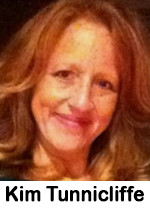 posted on X: “Some personal news to share. After 26 yrs at WBZ Radio, I’ve been let go due to corporate budget cuts. Quite the shock, but I’m taking some time for me, & spending lots of qt w/my pets. They love having me home & honestly, I don’t miss the hellish Boston commute…. I’m taking time to decide what I want to do next, but in meantime, I want to thank all the ppl I’ve interviewed over the years, esp the everyday folks who welcomed me into their homes as if I were family. Thank you for trusting me w/your stories. It’s been an absolute honor!”
posted on X: “Some personal news to share. After 26 yrs at WBZ Radio, I’ve been let go due to corporate budget cuts. Quite the shock, but I’m taking some time for me, & spending lots of qt w/my pets. They love having me home & honestly, I don’t miss the hellish Boston commute…. I’m taking time to decide what I want to do next, but in meantime, I want to thank all the ppl I’ve interviewed over the years, esp the everyday folks who welcomed me into their homes as if I were family. Thank you for trusting me w/your stories. It’s been an absolute honor!”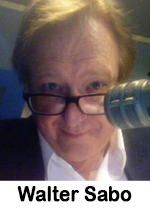 To be an expert in marketing requires expertise in how memory works. Early in my consultant practice, I studied and read every book I could find on the processes of memory. The best book is Effective Frequency: The Relationship Between Frequency and Advertising Effectiveness. Put simply, how many times does a consumer have to hear a message before it has impact? The book, a collection of studies, is the foundation for every qualitative study in the field today.
To be an expert in marketing requires expertise in how memory works. Early in my consultant practice, I studied and read every book I could find on the processes of memory. The best book is Effective Frequency: The Relationship Between Frequency and Advertising Effectiveness. Put simply, how many times does a consumer have to hear a message before it has impact? The book, a collection of studies, is the foundation for every qualitative study in the field today.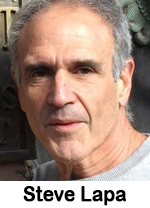 It’s complicated, this whole Federal Trade Commission ruling potentially banning the non-compete. Considering where you stand on the non-compete concept, it’s really all about evaluating the five “C” profile of your media business.
It’s complicated, this whole Federal Trade Commission ruling potentially banning the non-compete. Considering where you stand on the non-compete concept, it’s really all about evaluating the five “C” profile of your media business.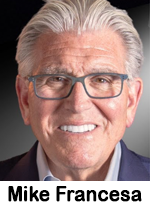 over for Greg Olsen alongside play-by-play announcer Kevin Burkhardt. Francesa is quoted saying that Brady obviously has a deep knowledge of the game but he believes Brady will struggle. “I don’t think his personality is such. I don’t think he’s going to be great at it. I really don’t. I think there’s a unique quality that you have to bring that allows you as an analyst to see the game, see the game quickly, plus bring personality into it. It’s a tricky job for the analyst in football because you’re going to spend a lot of time over replay. You’re going to spend a lot of time breaking down what happens on replay. And you also have to be very personable and glib in how you do it. I don’t see him there.”
over for Greg Olsen alongside play-by-play announcer Kevin Burkhardt. Francesa is quoted saying that Brady obviously has a deep knowledge of the game but he believes Brady will struggle. “I don’t think his personality is such. I don’t think he’s going to be great at it. I really don’t. I think there’s a unique quality that you have to bring that allows you as an analyst to see the game, see the game quickly, plus bring personality into it. It’s a tricky job for the analyst in football because you’re going to spend a lot of time over replay. You’re going to spend a lot of time breaking down what happens on replay. And you also have to be very personable and glib in how you do it. I don’t see him there.”  Soros, would become the largest shareholder in New Audacy and that Soros would “control these radio stations to advance their particular brand of activism.” Further, MRC objects saying that the FCC has an obligation to complete a full and thorough review and that the Commission is being asked to approve the change in ownership without this review, specifically
Soros, would become the largest shareholder in New Audacy and that Soros would “control these radio stations to advance their particular brand of activism.” Further, MRC objects saying that the FCC has an obligation to complete a full and thorough review and that the Commission is being asked to approve the change in ownership without this review, specifically 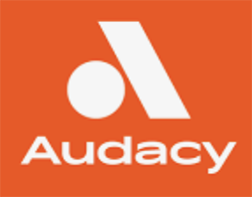 regarding the foreign ownership issue which the MRC says would not be handled as required by Section 310(b)(4) of the Communications Act of 1935 if the Soros Group gets what it wants. It’s asking the FCC “to waive that process and put it off until sometime down the road – indicating that those foreign stakeholders will be given ‘special warrants’ in the meantime. The Soros group says that putting off the required foreign ownership review will enable the FCC to expedite its approval of the Soros applications and thus allow them to more quickly realize their ownership interests in and take over the hundreds of local radio stations across the country.” The MRC argues that the Communications Act of 1935 “does not contain a special Soros shortcut.”
regarding the foreign ownership issue which the MRC says would not be handled as required by Section 310(b)(4) of the Communications Act of 1935 if the Soros Group gets what it wants. It’s asking the FCC “to waive that process and put it off until sometime down the road – indicating that those foreign stakeholders will be given ‘special warrants’ in the meantime. The Soros group says that putting off the required foreign ownership review will enable the FCC to expedite its approval of the Soros applications and thus allow them to more quickly realize their ownership interests in and take over the hundreds of local radio stations across the country.” The MRC argues that the Communications Act of 1935 “does not contain a special Soros shortcut.”  Interestingly, marketers and media agencies massively underestimate the immense sales effect power of creative. NCSolutions says that creative drives half of sales, about two-and-a-half times what advertisers perceive. The Advertiser Perceptions February 2024 study reports brands and media agencies say creative only represents 19% of total sales effect. NCSolutions science reveals creative generates an eye-popping 49% of incremental sales. According to System1 chief customer officer Jon Evans, “Creative is the number one factor in explaining the performance of your advertising and yet most marketers still don’t realize it. That means that those who focus on getting the creative right have a huge competitive advantage. Firstly, marketers need to wake up to the importance of creative and secondly realize it isn’t some dark art but something you can measure and improve to give you an advantage over the competition who haven’t realized this yet.”
Interestingly, marketers and media agencies massively underestimate the immense sales effect power of creative. NCSolutions says that creative drives half of sales, about two-and-a-half times what advertisers perceive. The Advertiser Perceptions February 2024 study reports brands and media agencies say creative only represents 19% of total sales effect. NCSolutions science reveals creative generates an eye-popping 49% of incremental sales. According to System1 chief customer officer Jon Evans, “Creative is the number one factor in explaining the performance of your advertising and yet most marketers still don’t realize it. That means that those who focus on getting the creative right have a huge competitive advantage. Firstly, marketers need to wake up to the importance of creative and secondly realize it isn’t some dark art but something you can measure and improve to give you an advantage over the competition who haven’t realized this yet.” 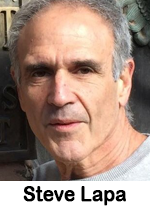 Time to thank the lawyers in the Donald Trump trial for once again proving beyond any doubt the power of talk radio.
Time to thank the lawyers in the Donald Trump trial for once again proving beyond any doubt the power of talk radio.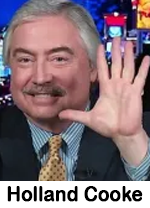 I asked ChatGPT: “Vendors are now offering radio stations a service that delivers advertising commercial copy generated by AI. Because AI draws from what’s already been done, this risks sound-alike scripts. Is there a list of commercial clichés users should instruct AI to exclude?”
I asked ChatGPT: “Vendors are now offering radio stations a service that delivers advertising commercial copy generated by AI. Because AI draws from what’s already been done, this risks sound-alike scripts. Is there a list of commercial clichés users should instruct AI to exclude?”
